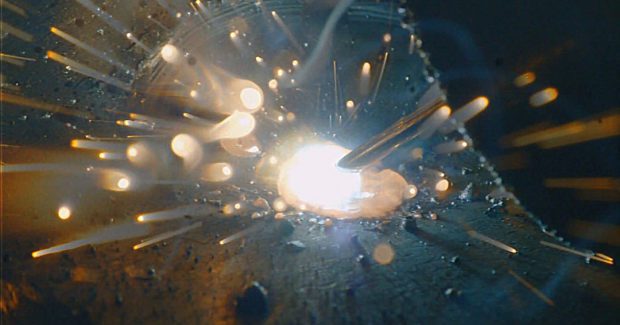Eight Ways to Improve Welding Productivity Using a Weld Camera
An automated welding environment can be too congested or dangerous for operators to directly monitor the welding tip while under operation. How can they properly monitor the welding process remotely?
Posted: February 13, 2018
It is essential that operators who control and adjust automatic welding processes see all the elements of the environment around a weld. These processes can present a problem for operators. An automatic welding environment is typically too congested or too dangerous to have operators directly monitor the welding tip while under operation (think scaffolding on the side of a pressure vessel, or small pinch points around a robotic welding station). How can you, as a fabricator, have your operators properly monitor the welding process remotely?
The effective solution is to use a camera, but not just any type of camera. What you need is a Weld Camera that can see the very bright light source of a weld arc, as well as the neighboring dark areas of the background such as the parent material. So, how can a weld view camera help your business? The eight points below establish a clear link between the overall goals of quality, safety and productivity and the benefits of a Weld Camera:
1. HEALTH AND SAFETY
Using a Weld Camera to monitor the welding process means that you do not need an operator in the direct weld area. This is a significant occupational health and safety advantage. Hazardous conditions such as electrical shock, welding fume inhalation, “welding eye” (direct exposure of the weld arc to the human eye), contact with weld spatter and injuries from moving or falling objects are all common on-the-job risks that can be eliminated by removing the operator from the work area. Adding a Weld Camera means fewer sick days, less risk of workers’ compensation claims, reduced legal liabilities and a healthier, happier operator.
2. BETTER MONITORING OF INPUTS IN THE WELD ENVIRONMENT
By adding a Weld Camera to the process, the operator has a clear view of the welding tip and its surrounding area. The position of the weld tip relative to the seam, position of filler wire, height of weld tip, size of weld arc, power supplied to weld head and many other parameters can all be monitored visually with this camera.
3. REDUCED SETUP TIME
Using a Weld Camera reduces the time required to set up the weld tool and materials. By looking at the weld area remotely, where the welding controls are located, the operator can control and monitor the process from one place.
4. RUN-TIME PRODUCTIVITY
A camera increases the “arc on-time” during the welding processes with less need for the operator to stop during the process to make adjustments, such as setting wire length and torch position. In traditional welding processes, the operator typically has to stop the welding process, monitor the welding wire with the arc off, and then restart the welding process, wasting valuable time.
5. OPERATIONAL PRODUCTIVITY
Using a Weld Camera reduces scrap as well as losses that cut into profits from weld failures in the field. On-line monitoring of the weld can detect defects as they happen, allowing the operator to make immediate adjustments to the process that will minimize bad welds and rework. This will vastly reduce defective finished products, which don’t meet quality specifications.
6. TROUBLESHOOTING
A camera allows an operator to identify the source of problems during the weld process, whether they are impurities in the parent material, component misalignment, improper amount of shielding gas, or improper geometry of the keyhole or weld pool. The Weld Camera will help to identify what might be the most likely cause of the problems, ensuring that the solutions are effective at restoring the welding process to its ideal state.
7. REAL-TIME VERIFICATION
A Weld Camera provides a direct view of the welding arc and the work environment, with enough detail for immediate adjustment. The operator can make adjustments, such as aligning the weld head to the seam or the filler material, modifying wire length or shielding gas flow rates, detecting impurities or porosity in the weld pool, and optimizing the weld process by keeping the shape of the molten metal as ideal as possible.
8. VIDEO RECORDING
Video recording is one of the most important benefits of a Weld Camera. By adding the camera and capturing a live video of the welding operation, the process can be recorded, stored and reviewed off-line for quality assurance monitoring, while also verifying that 100 percent of production was welded correctly. The recording is also essential for process verification and improvement, which means analyzing off-line what was working and what was not working properly during the process. A video recording is also ideal for training to observe an operator’s activity and play it back for classroom review and analysis.
While the use of a Weld Camera to monitor welding processes is not a new concept, the development of a Wide Dynamic Range Weld Camera provides far more detail that can be monitored in a welding process than ever before. This innovative camera eliminates pixel saturation that previously masked the weld process details. The result is a clear definition of the weld tip as well as making its darker environment clearly visible, allowing for improved productivity of the welding process.
Xiris Automation Inc., 1016 Sutton Drive, Unit C5, Burlington, ON, Canada L7L 6B8, 905-331-6660, Fax: 905-331-6661, www.xiris.com.




